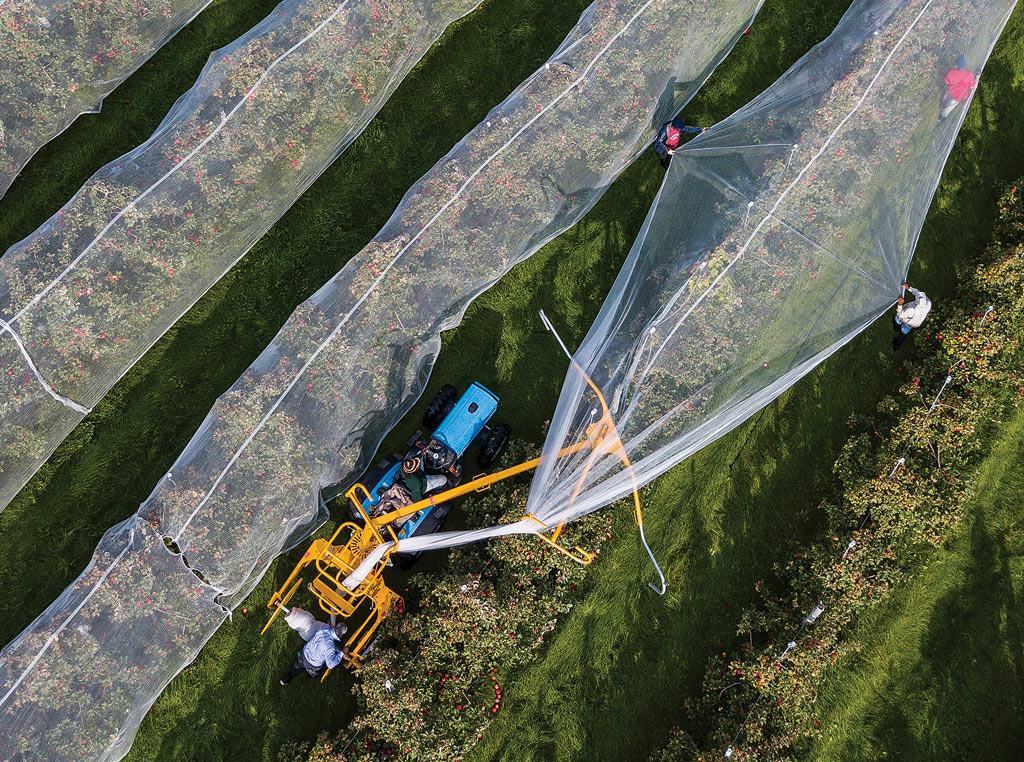
Stevenson’s experienced crew can easily install 10-15 acres of netting in a day using his NetWiz applicator.
Agriculture, Sustainability March 01, 2021
Mitigating Storm Risk
Orchards turn to technology to ease their stress.
Enough is enough. Helen Giroux had been willing to write off the hail they received the first year following their purchase of Chazy Orchards in Chazy, New York as bad luck and wrote off the hail the next year as extremely bad luck. But when hail destroyed their fourth apple crop in their first six years of operation, it was the last straw.
Earlier generations of farmers only got a few massive storms in their entire farming career. Today they seem to be coming more frequently and are more damaging too. But some aren’t willing to passively accept whatever Mother Nature throws at them and are starting to fight back.
“Everyone kept saying, ‘that’s why you have crop insurance,’” Giroux says. “We didn’t like that answer; so we started searching to see if there was anything else we could be doing to protect us from hail. This led us, in a very round-about way, to Michael Cunial who had just invented something he was calling Drapenet in Australia.”
Like an umbrella. Drapenet, and a handful of other companies, now sell anti-hail netting products that are designed to protect crops from damage. Most are suspended on hoops or trellises; Drapenet is laid directly on top of the trees. It acts like a giant umbrella to shelter the trees and the fruit during a hailstorm. It’ll protect them from hazards like birds, bats, insects, sunburn and wind too.
“The hail hits the netting and bounces off,” Giroux says. “You might get some damage on the outside fruit that’s against the netting, but most will be fine. So, if you get a big hailstorm, instead of having 50 percent damage, you might see just 2 to 5 percent.”
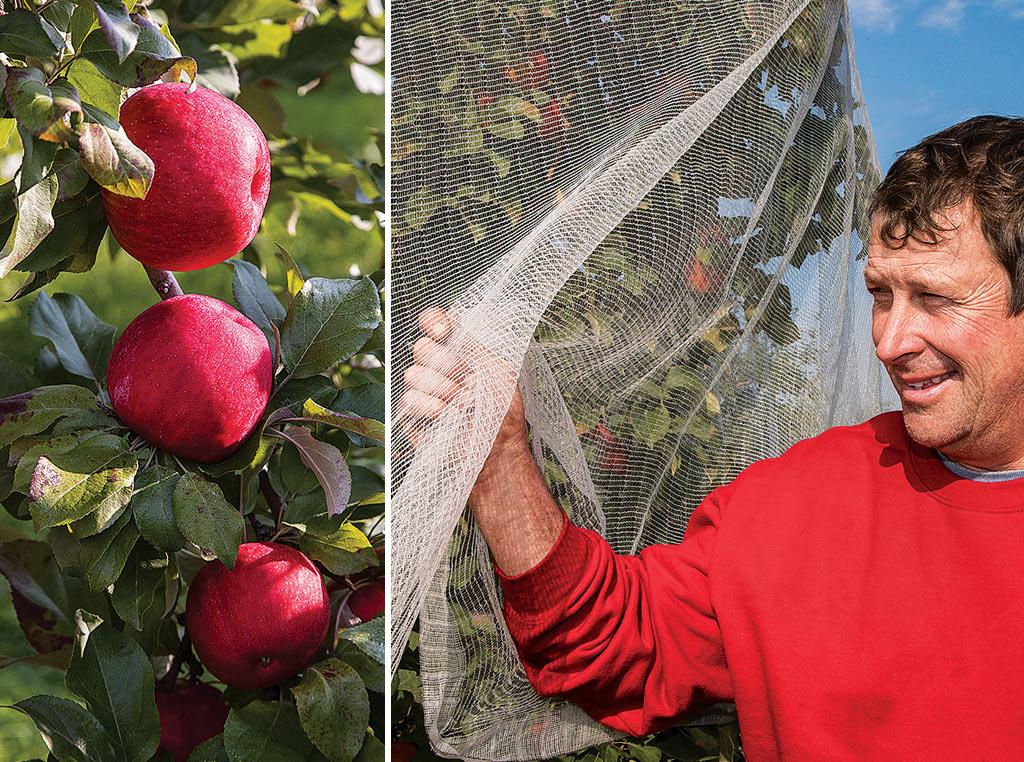
Workers help guide the netting as it’s spooled up for winter storage. The netting acts as an umbrella to protect the trees and fruit from hail. Fred Stevenson feels using it is a no-brainer decision.
The netting is installed right after petal fall (when the blossoms fall off) using a specially designed 3-point hitch mounted applicator called a NetWiz. A roll of netting is loaded onto a spool on the applicator. Workers then use ropes attached to the net’s corners to feed it up and over the applicator’s fingers. The netting unspools and the crew guides it as it drops down over the top of the trees as the tractor slowly drives down the row.
Afterwards it’s either tied to the lower branches or the bottom edges are joined together using zip ties. There is a bit of a learning curve to install and uninstall it, but an experienced crew of five can install 10 to 15 acres a day. It’s removed using the reverse procedure just prior to picking. Giroux was so impressed with it that she made arrangements to be the products’ U.S. distributor.
Their netting costs about U.S. $3500 an acre. On top of that the NetWiz applicator, the tool used to install and remove it isn’t cheap; it costs about $17,500. But, Giroux says, as long as workers are careful, and don’t tear it with a tractor while working around the trees, a roll could potentially be used for up to ten seasons as long as it’s kept indoors in the winter. “It only takes one storm to pay for itself,” says Fred Stevenson, owner of Verger Stevenson in Franklin Centre, Quebec. “We had a huge hailstorm in 2017. It went on for half an hour. By the time it was over, the ground was so white it looked like January. My father hadn’t seen anything like it. If we have another storm like that, we’ll have a crop to sell. None of the other growers around us will.”
Stevenson had heard that the Girouxs were using netting to prevent hail damage but had never looked into it. But the 2017 storm provided the motivation he needed to drive down and check it out.
“I spent the day with them,” Stevenson says. “Once I saw how easy it was, buying it was pretty much a no-brainer decision for me.”
Neither Stevenson or Giroux have had a hail hit their orchards since they started using it. Giroux says, other growers across the U.S. though have had great luck with it. “Some growers might be willing to gamble they’ll keep missing storms,” Stevenson says. “But I don’t have time to bet. I’ve made some pretty high investments in managed varieties so we really don’t have time for a loss year. So, it’s not that big of an expense compared to the protection it offers.”
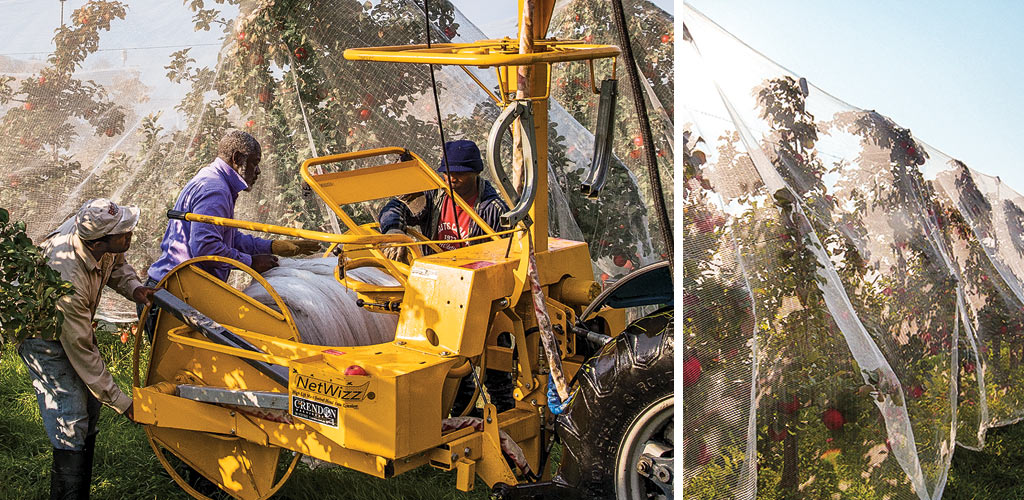
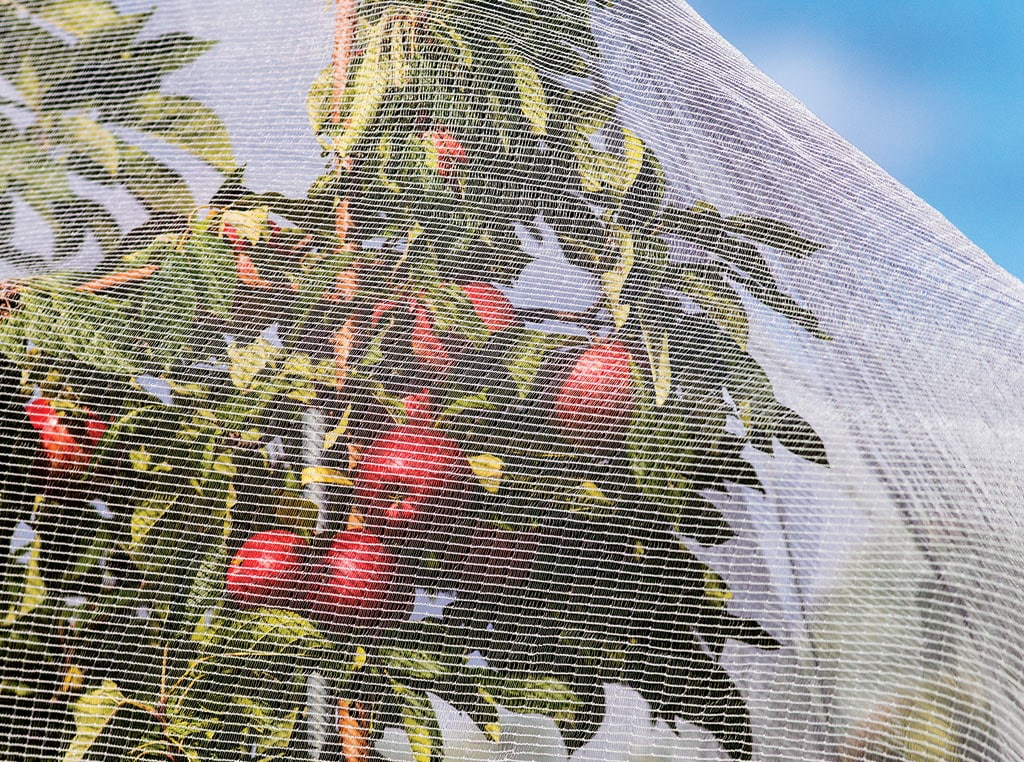
Read More
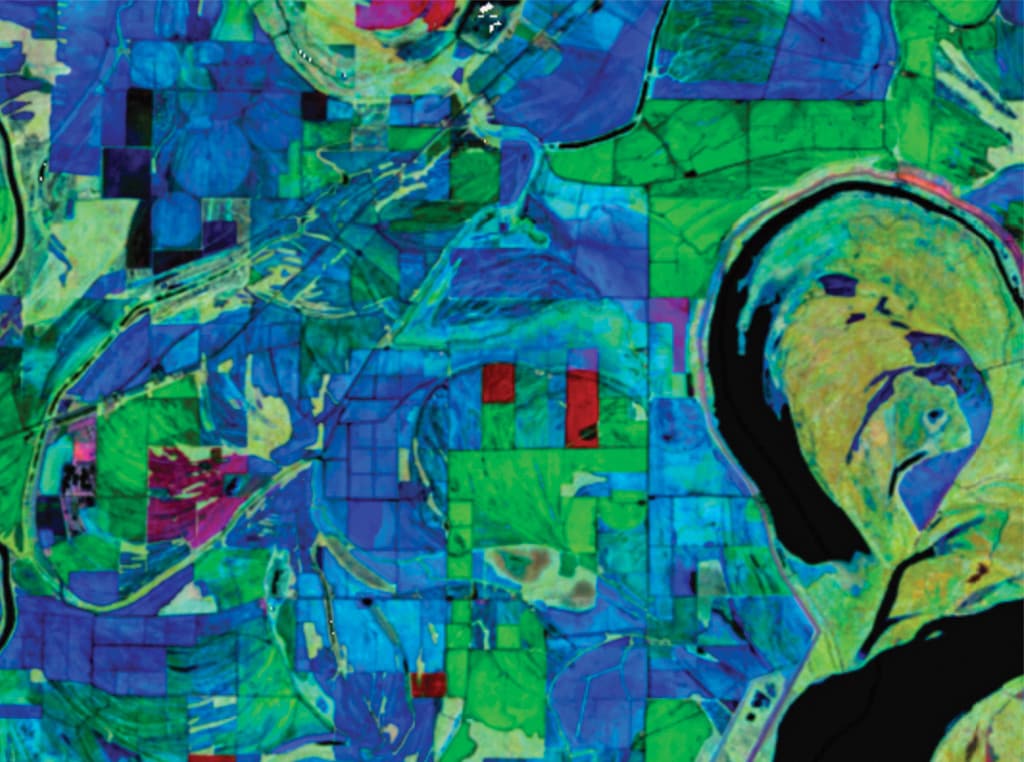
Agriculture, Ag Tech
Ag Data Is Beautiful
Digital sattellite data paints farm masterpieces.
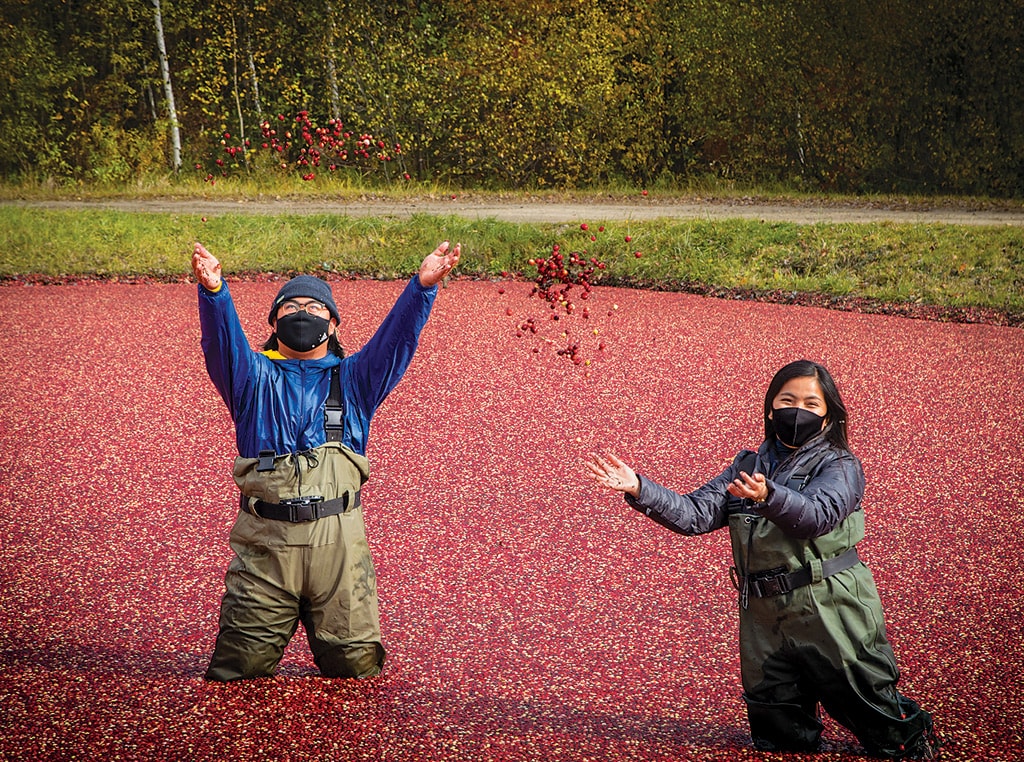
Agriculture, Specialty/Niche
Year-round Tourism
Muskoka farm develops innovative ways to incorporate four-season tourism attractions.
